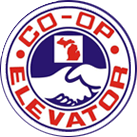The Internet of Things and Automating Procure to Pay
The Internet of Things has been a hot topic for years now, often in reference to consumer “things” like home automation.
The Internet of Things has been a hot topic for years now, often in reference to consumer “things” like home automation. With consumers snatching up Amazon Echos and Google Voice devices last holiday season, the Internet of Things has finally begun established a beach head in our homes.
More broadly, particularly as it applies to business, the Internet of Things promises to bridge the gap between humans, software automation and the physical world in ways that have far deeper and broader implications for business operations - including the procure to pay process.
The most-commonly cited examples of Internet of Things use cases involve consumer applications like monitoring and optimizing a home thermostat or using a remote video camera to catalog the contents of your refrigerator to update your grocery shopping list. Business applications often highlight supply chain scenarios, where RFID-labelled goods are automatically inventoried and handled by robotic forklifts, and so on.
When it comes to P2P, the big “thing” that gets in the way of process efficiency and creates bottlenecks is paper documents and/or their digital counterparts. In either case, these “things” have to be manually stored and retrieved. They have to be manually transformed into actionable data, using a computer keyboard and mouse as the interface.
For the most part, companies have given up on going completely paperless. Rather, they have learned to live with paper and digital documents and instead, are figuring out how to bridge the gap between the physical and digital elements of common business processes to truly innovate.
Read the Stories How Our Customers Implement Artsyl’s Intelligent Process Automation Products to Achieve the Best Results with AP/AR Financial Processes
The Human Element in IoT
Through the lens of the Internet of Things, purchase orders, invoices and receipts are “things” that can be transformed from inert objects that slow down a process into the data sources and an opportunity for automation. Technology that can reliably and cost-effectively transform documents into data that in turns informs a set of rules to match documents and route invoices for approval is readily available, with a demonstrable ROI. That same technology can intelligently identify and flag process exceptions that are better handled today by human workers.
As this example illustrates, the other KEY element in the Internet of Things world is the human one.
When you think about the Internet of Things, you should be thinking about the interaction between humans and things (paper, products, appliances, etc), and asking yourself how sensors and software intelligence might make it possible to do things differently.
When it comes to payables invoice processing, over 90% of invoices can be handled without involving human intervention.
docAlpha, Artysl’s Digital Transformation Platform for intelligent document capture, is just one example of a system that can automatically translate paper and electronic documents into structured data. This data can be exchanged with ERP and ECM systems to perform invoice validation and matching, along with approval routing and transaction entry.
That same approach can apply to any document- or data-driven process, eliminating routing steps while empowering employees to manage exceptions.
For more information about how docAlpha and how The Internet of Things can transform P2P, consult your Artsyl representative.



